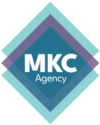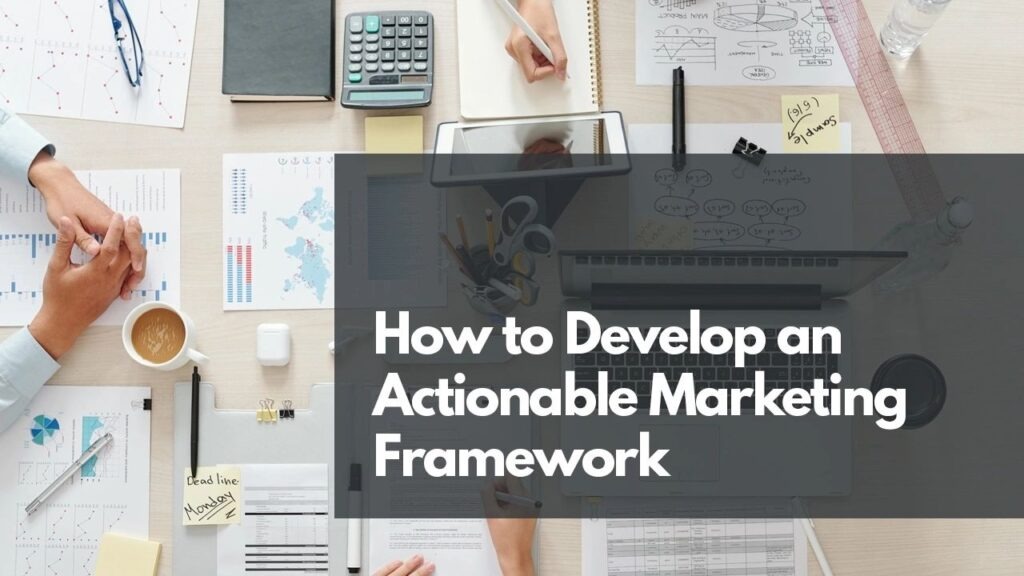When an architect designs a building, is she more concerned with the “why” of the building, or the what and the how?
Think of develop an actionable marketing framework as the blueprint to your overall marketing strategy.
It’s a template that spells out the exact steps you need to put in place to execute your marketing plan. This well-crafted framework ensures that you’re delivering the right content to the right audience, through the right channels, and at the right time to achieve your core marketing objectives.
Actionable marketing draws in prospective clients, current customers and the general public to interact with your brand and decide to purchase from your business as well as develop trust and a solid relationship. Using multiple platforms, actionable marketing is aimed at creating and adding value for your customer…if it’s thought out and executed properly.
Here are 6 steps to developing a solid, effective marketing framework for your business. One size kind of fits all: they can be adapted and enhanced to fit most forms of marketing.
1. Define your marketing goals.
Where are you going, and how will that help your business scale and grow? Marketing goals should be lined up with your business objectives. Marketing isn’t a stand-alone thing; to be effective, make your marketing goals as specific and measurable as possible. As a result, you’ll be in a better position to focus your efforts and accurately measure progress.
Here are some meaningful business goals to get you started:
-
Build your brand. What you want to do here is to position your product or company in the mind of your prospect and the forefront of the market.
-
Gain and retain customers. Over time, businesses lose customers for a wide range of reasons. Also, profitable customers become less profitable– therefore businesses need to continually acquire new customers, retain their current customers and hopefully reactivate former customers.
-
Increase sales. While growing your bottom line is complex and will take multiple steps to achieve, each sale should contribute its share. Ideally, you want to aim for your revenues to exceed your costs, at least in the long run
2. Identify your audience.
Time to brush up on creating your ideal customer personas and your List! Time to sit down and bang out a complete, accurate, and specific example of your ideal customer. What this implies is developing a marketing persona as well as a social media persona so you can imagine your chosen audience and target your efforts toward that specific demographic. Traditionally, there are the three main pieces to the “ideal persona” pie:
-
Demographic traits. We’re talking geographic location, age, financial resources, marital status etc. Be careful; relying on this data may cause you to overlook other factors that influence your audience in their purchasing decisions.
-
Psychographic characteristics. Fancy-speak for “what customers are interested in and helps you understand why they buy certain stuff instead of other stuff” (AKA make purchase tradeoffs).
-
Behavioural actions. This facet examines the past and can overlook recent changes in customer behaviour (why have they been gravitating toward certain services and products lately?).
3. Create the offer.
What do you have to offer exactly and how does it stand out? Describe the specifics of your product or service. Go beyond the basic offering and incorporate powerful, compelling related information, branding and pricing that sets your offering apart from competitors. Let’s get to work by answering some questions organized around the traditional four P’s of marketing to help develop your offering.
Product:
-
What’s the product or service? How does it differ from competitors?
-
What, if anything, does the customer get on top of the base product, sometimes referred to as an augmented product? What kind of extras do you offer, such as guarantees, ongoing support, and community?
Place:
-
Where does the prospect engage with your business, content or promotions?
-
On which platform is the offer made, and at which point in the purchase decision process does that happen?
-
Where can the consumer buy your product/service? Are there multiple options available?
-
What channels do you use to offer regular additional content and follow up communications?
Promotion:
-
Are there any special deals, incentives, time limits, or quantity limits?
-
Where is the customer in the purchase process? Where is the customer physically?
-
How does the customer access this information?
Pricing:
-
How is the product or service priced? Is pricing consistent across channels? If not, is there a good reason?
-
How do you sell other products or services?
4. Develop your creative.
In a nutshell, ‘creative’ relates to how your product/service is presented to prospects, customers and the public. How are you putting out the information everyone needs to see to engage with your business? It encompasses five distinct components.
-
Branding. How is your organization’s branding incorporated into your content, advertising, social media or other promotional pieces? How is your brand positioned in the marketplace?
-
Product benefits. How does your offering meet the needs of your leads?
-
Media platform. Since media-format specifics influence creative presentation, you must consider where the promotion is going to be distributed or shared.
-
Call-to-action. How does your promotion overcome customer indecision and close the deal?
-
Response channels. How do customers purchase the product? Options include online, mobile retail, phone and snail mail.
5. Choose your channel.
Cover all your bases: you’ll need to use a combination of distribution and promotion to get your content or promotion into the hands of its maximum potential audience. You want this information to be available in a format that they find easy-to-consume (think of text, photographs, video, audio, animation clips or PDFs). Whichever media you use, it should be aligned with your business goals to reach the appropriate target audience. What does that look like?
-
Social media. Ah, the belle of the ball. Social media platforms are useful for extending your reach to a broad audience.
-
Owned media. These are platforms your organization owns. They generally reach your prospects and past customers since you have a way to contact them. This includes your website, blog and email list. Don’t underestimate your owned media.
-
Third-party media. Also known as paid media, this refers to aggregated audiences owned by other media entities or companies. They normally require payment but can also include guest posts or list exchanges.
6. Determine your success metrics.
There’s only one way to know if your plan is working and getting the results you are aiming for, or whether something needs to be adjusted for maximum impact: the metrics. Pore over your success metrics to assess your results and determine your marketing’s effectiveness in achieving your intended goals. Again, this is why it’s so helpful to set goals that are specific and measurable.
Each of these six goals should be unpacked and adapted to your specific marketing goals to make sure that you’re focused on accomplishing your business objectives in the right way, at the right time, with the right resources.
Are you ready to set up your actionable marketing framework and get the results you want? We can help you with that! Megan Killion Consulting is a team of dedicated, experienced professionals who are equipped to meet your specific targets and get you the leads you want. Give us a shout, and we can start working together to meet your unique business needs.

